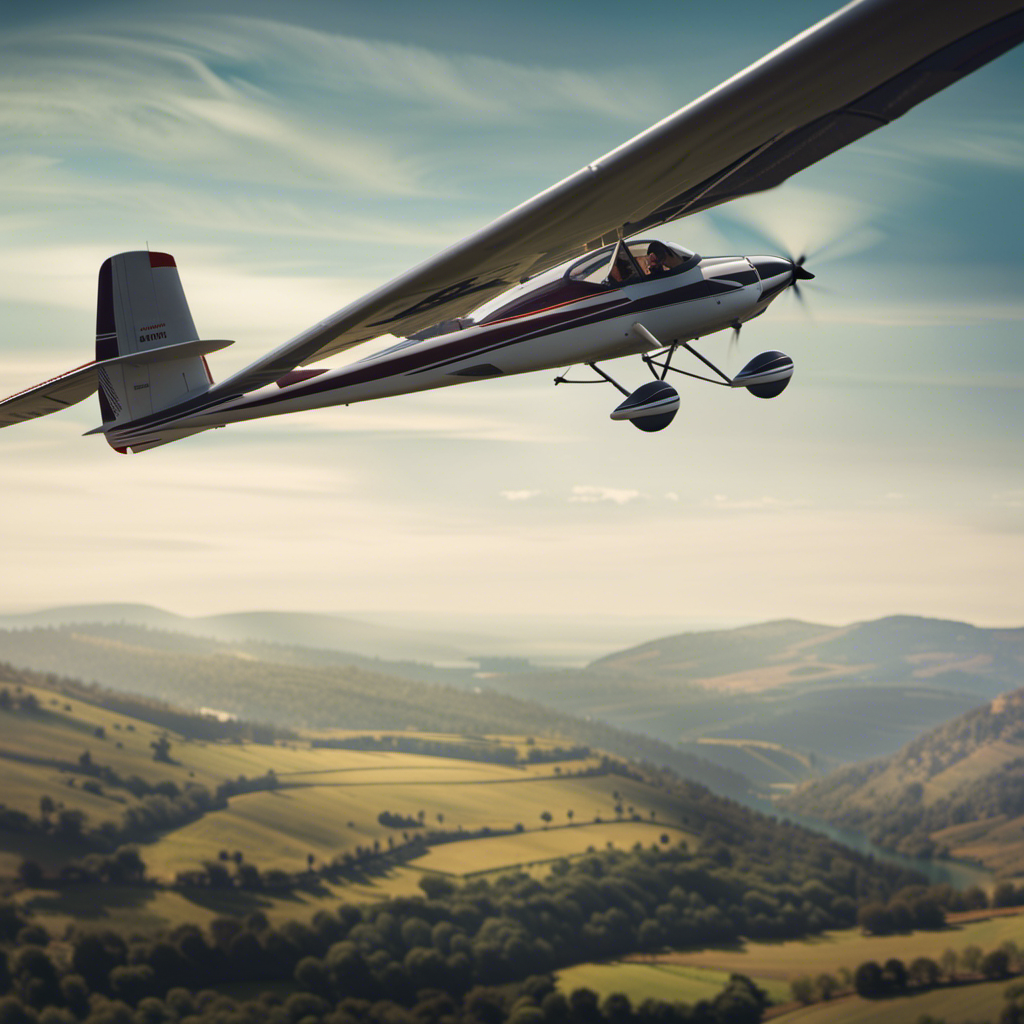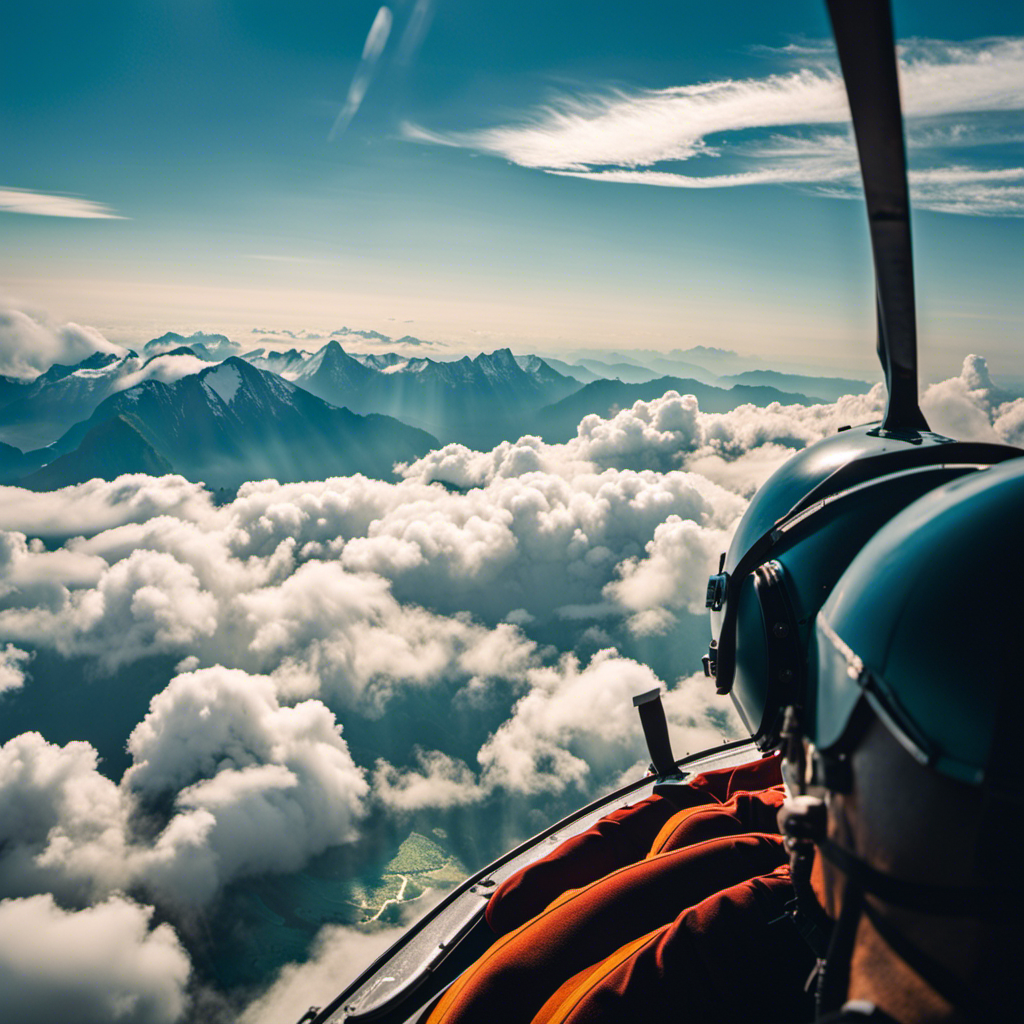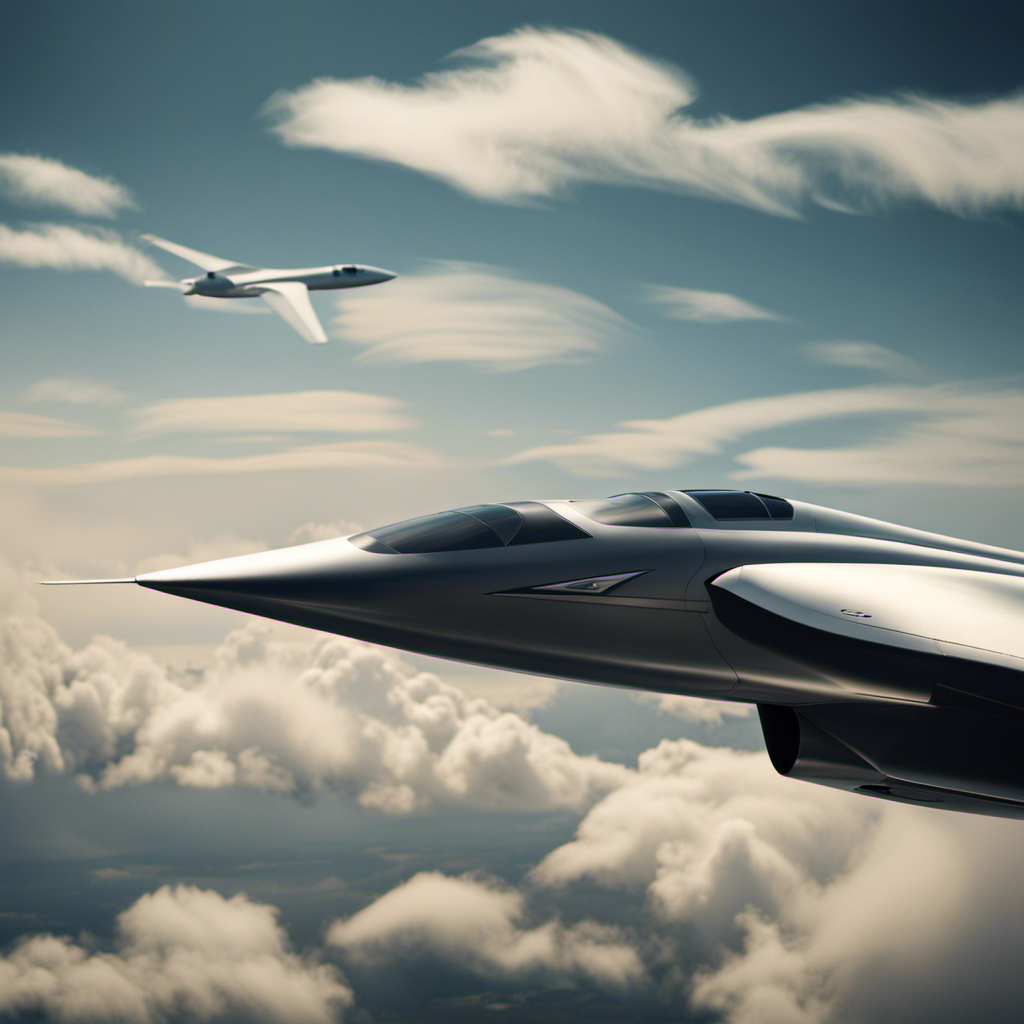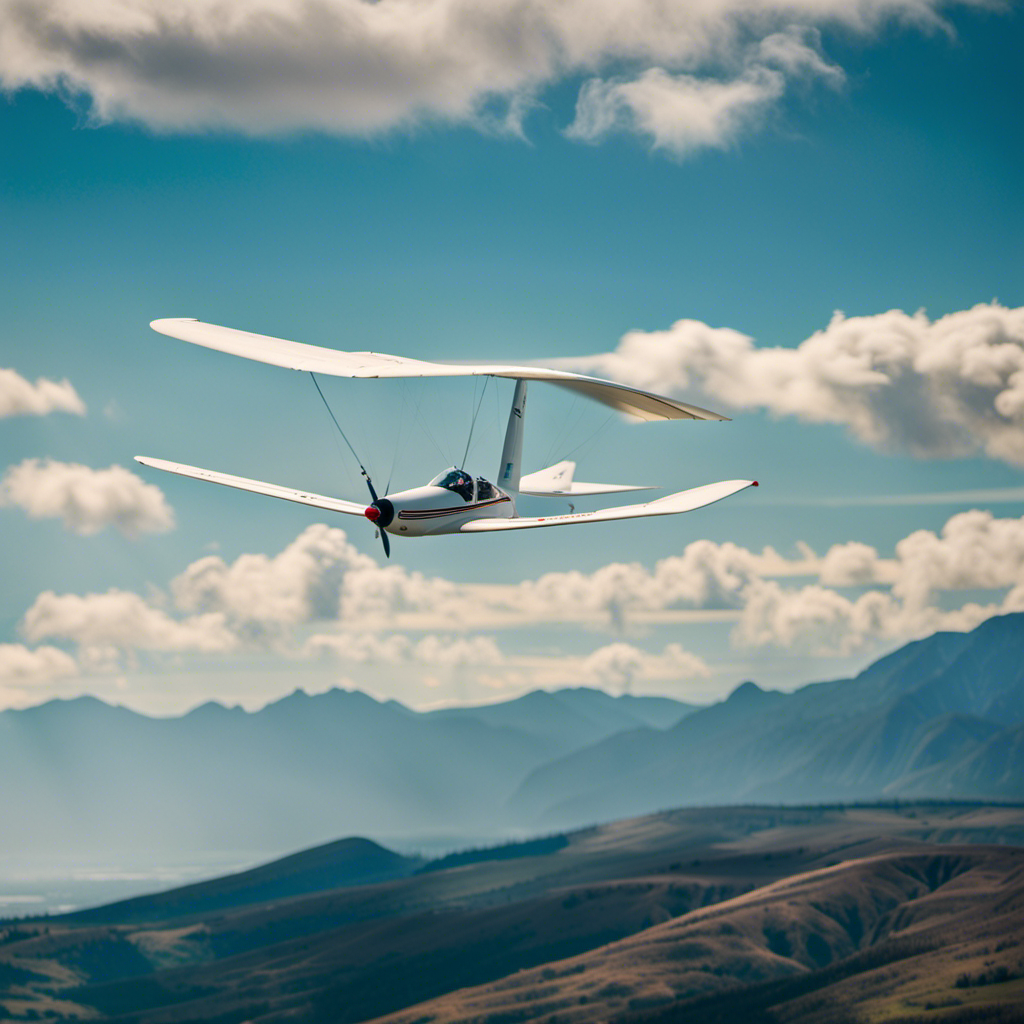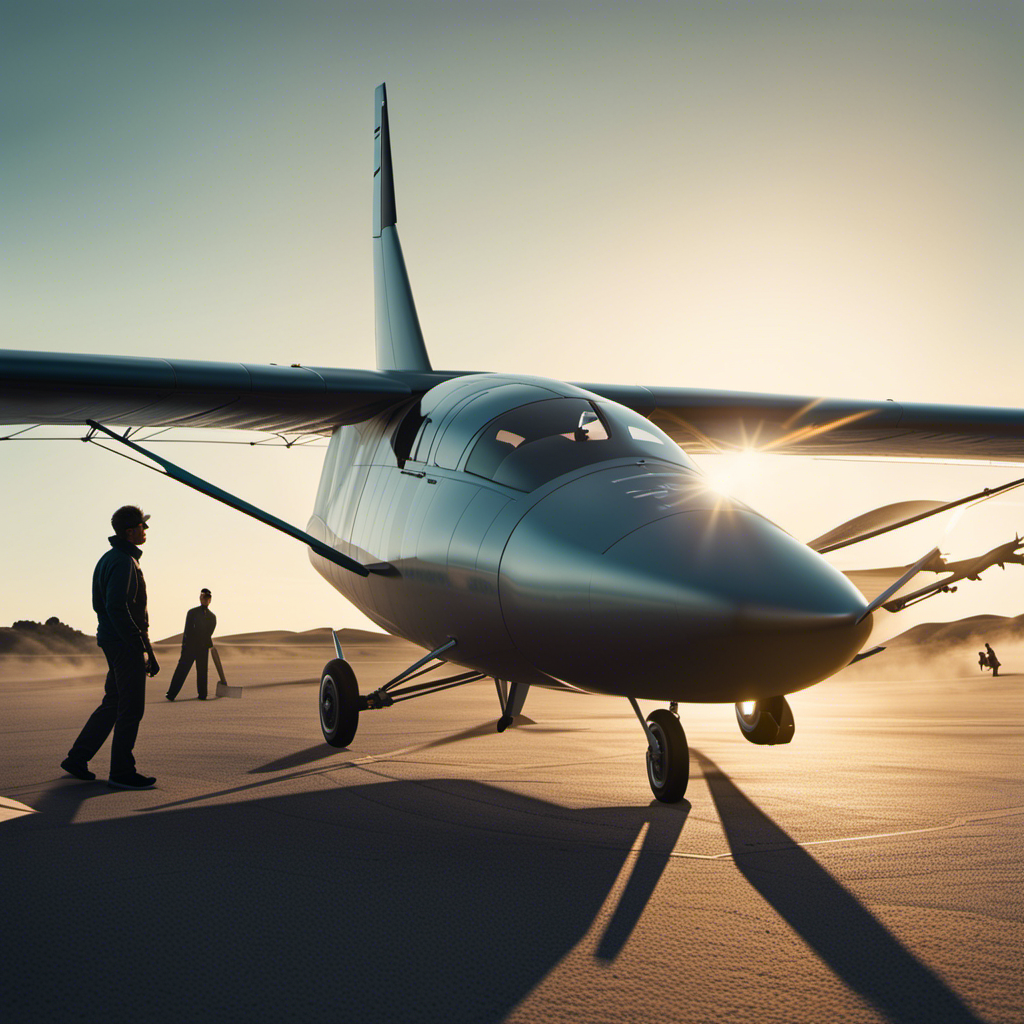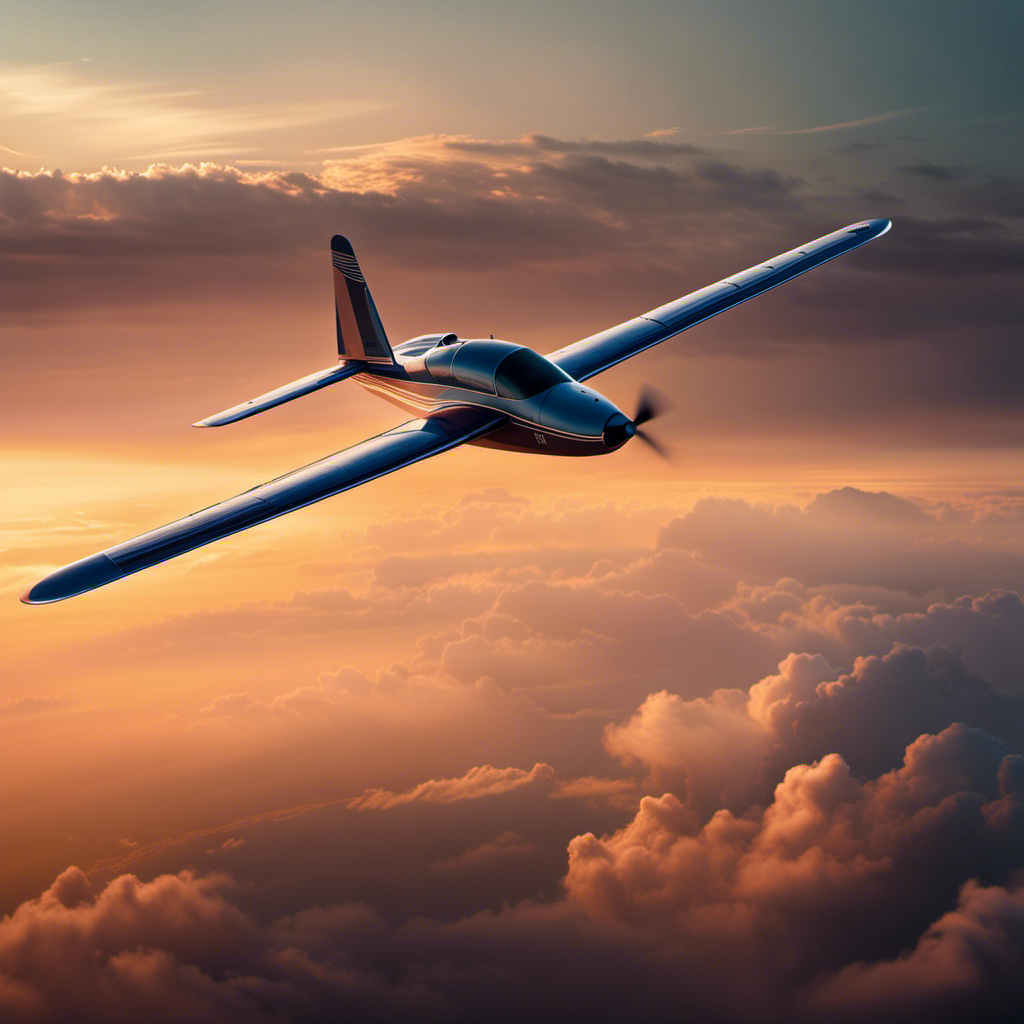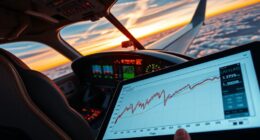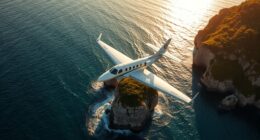As a gliding enthusiast, I always thought that soaring through the sky would make my dream come true. However, the costs associated with obtaining a glider pilot’s license can be a significant obstacle for even the most dedicated flyers.
From training fees to equipment expenses, insurance costs to fuel and transportation, investing in the sky is not for the faint of heart.
Join me as I delve into the financial realities of pursuing this exhilarating hobby.
Key Takeaways
- Cross-Country Endorsement and Mountain Flying Training are essential for expanding horizons, enhancing skills, and ensuring safe and confident glider flying.
- Miscellaneous expenses include proper flying attire, medical examinations, insurance coverage, and membership fees at gliding clubs.
- Recurring costs involve rental fees for the glider, regular aircraft maintenance, insurance coverage, fuel, landing fees, and ongoing training and recertification courses.
- Upfront costs for obtaining a glider pilot license are significant and cover training, exams, licensing fees, flight hours, instruction, study materials, and financial planning.
Training Fees
You’ll need to budget for training fees when obtaining a glider pilot license. The cost of training for a glider pilot license can vary depending on the flight school you choose and the duration of the training program.
On average, you can expect to pay around $5,000 to $10,000 for the training. This fee typically covers the cost of flight instruction, ground instruction, and any necessary study materials. It is important to consider this expense when planning to pursue a glider pilot license, as it can significantly impact your overall budget.
Once you have completed the training and obtained your license, you can move on to the next phase of your glider pilot journey, which involves purchasing the necessary equipment.
Equipment Expenses
Don’t forget to budget for equipment expenses when getting your glider pilot license. As a prospective pilot, it is important to understand that acquiring the necessary equipment is an essential part of the process.
The cost of equipment can vary depending on your preferences and needs, but some common items include a helmet, flight suit, parachute, radio, and navigation tools. These are not just accessories, but rather essential tools that ensure your safety and enhance your overall flying experience.
It is crucial to invest in high-quality equipment that meets safety standards and is suitable for glider flying. By budgeting for these expenses, you can ensure that you have everything you need before embarking on your glider pilot journey.
Transitioning into the subsequent section about ‘license and certification fees,’ it is important to note that equipment expenses are just one aspect of the overall costs associated with obtaining a glider pilot license.
License and Certification Fees
Transitioning into the subsequent section, it’s important to consider the fees involved in obtaining your glider pilot certification. Acquiring a glider pilot license comes with various costs that aspiring pilots need to be aware of. These fees cover the necessary training, examinations, and paperwork required to become certified. To give you a better understanding of the financial commitment involved, let’s take a look at the following table:
| License and Certification Fees | Cost |
|---|---|
| Ground School | $500 |
| Flight Training | $3,000 |
| Written Exam | $200 |
| Practical Exam | $500 |
| License Application | $100 |
As you can see, the total expenses for obtaining a glider pilot certification can add up to $4,300. It’s crucial to budget and plan accordingly to ensure you can cover these costs. Transitioning into the next section, it’s important to also consider the insurance costs associated with glider piloting.
Insurance Costs
Insurance for glider pilots can be a significant expense that needs to be factored into your overall budget. It is important to protect yourself and your aircraft against unforeseen circumstances. When considering insurance options, it is crucial to assess the coverage provided.
This includes liability, hull, and personal injury protection. Liability coverage should include property damage and bodily injury caused to others while flying. Hull coverage protects against damage to your glider. Personal injury protection covers medical expenses if you or your passengers are injured during a flight.
Factors that can affect insurance costs include your flying experience, age, and the value of your glider. It is advisable to compare quotes from different insurance providers to ensure you find the best coverage at a reasonable price.
Moving on to club memberships, they offer numerous benefits and opportunities for glider pilots.
Club Memberships
Joining a glider club can provide glider pilots with a supportive community and access to additional resources. When you become a member of a glider club, you gain more than just a place to fly. Here are some of the benefits that come with joining a glider club:
- Regular club meetings where members can share their experiences, tips, and tricks.
- Access to club-owned gliders, reducing the need for personal investment.
- Training programs and workshops to improve your skills as a glider pilot.
- Social events and fly-ins, allowing you to connect with fellow pilots and aviation enthusiasts.
- The opportunity to participate in club competitions and events, challenging yourself and showcasing your skills.
Being part of a glider club not only enhances your flying experience but also provides a network of support and camaraderie. As we delve into the next section on maintenance and repair costs, it’s important to consider how being a member of a glider club can help mitigate these expenses.
Maintenance and Repair Costs
As a member of a glider club, you’ll have access to resources and support that can help alleviate maintenance and repair expenses. Being part of a club means that you can benefit from shared knowledge and experience, as well as access to discounted parts and services.
In addition, many glider clubs have their own maintenance facilities, which can save you money on labor costs. Regular maintenance is essential to keep your glider in top shape and ensure its safety. By regularly inspecting and servicing your glider, you can catch any issues early on and prevent them from escalating into costly repairs.
Taking care of your glider and following proper maintenance procedures can also extend its lifespan, saving you money in the long run.
Transitioning into fuel and transportation expenses, these are additional factors to consider when budgeting for your glider pilot license.
Fuel and Transportation Expenses
When it comes to fuel and transportation expenses for your glider flights, you’ll need to factor in the cost of avgas and any fees associated with towing or launching your glider at different airfields.
Avgas, or aviation gasoline, is the fuel commonly used for gliders and can be quite expensive. The cost of avgas will depend on the current market price and the amount of fuel required for your flight.
Additionally, some airfields may charge fees for launching or towing your glider, which can vary depending on the location. It’s important to research and budget for these expenses to ensure you have a clear understanding of the overall costs involved in glider flying.
Now let’s explore the next aspect of investing in a glider pilot license: additional training and endorsements.
Additional Training and Endorsements
To further enhance your skills as a glider pilot, you’ll want to consider obtaining additional training and endorsements. This will not only make you a more competent and confident pilot but also open up new opportunities for flying.
Here are three options to consider:
-
Aerobatic Training: Learning aerobatic maneuvers will not only improve your flying skills but also give you a greater understanding of the physics and dynamics of flight.
-
Cross-Country Endorsement: Obtaining a cross-country endorsement will allow you to fly gliders over longer distances, expanding your horizons and enabling you to explore new areas.
-
Mountain Flying Training: If you’re interested in flying in mountainous regions, mountain flying training is essential. It will teach you the techniques and safety considerations required for navigating through challenging terrain.
By investing in additional training and endorsements, you’ll become a well-rounded and capable glider pilot, ready to take on new adventures and challenges.
Now, let’s move on to the next section about miscellaneous expenses without further delay.
Miscellaneous Expenses
If you’re considering becoming a glider pilot, it’s important to be aware of the miscellaneous expenses involved. While the upfront costs for obtaining a glider pilot license are significant, there are also various other expenses to consider.
First and foremost, you will need to invest in proper flying attire, including a flight suit, helmet, and gloves. Additionally, there are costs associated with medical examinations, as aviation authorities require pilots to maintain a valid medical certificate. Another important expense is insurance coverage, which is necessary to protect yourself and your glider in case of accidents or damages. Lastly, you should budget for membership fees at gliding clubs, which provide access to facilities and training resources.
These miscellaneous expenses should be factored into your overall budget when considering the financial commitment of becoming a glider pilot.
Transitioning into the subsequent section about recurring costs, once you have obtained your glider pilot license, there are ongoing expenses to consider.
Recurring Costs
Transitioning from the miscellaneous expenses associated with obtaining a glider pilot license, let’s now delve into the recurring costs that aspiring glider pilots should be aware of.
These are the ongoing expenditures that pilots will encounter throughout their flying journey. One of the primary recurring costs is the rental fee for the glider itself. Depending on the type and duration of the rental, prices can vary significantly.
Additionally, pilots must consider the cost of regular aircraft maintenance, which includes inspections, repairs, and general upkeep.
Another important recurring expense is insurance coverage, which is crucial for protecting both the pilot and the aircraft.
It is also essential to factor in the costs of fuel and landing fees, as these can vary depending on the location and frequency of flights.
Lastly, ongoing training and recertification courses are necessary to maintain proficiency and stay up-to-date with safety regulations.
Understanding and preparing for these recurring costs is essential for anyone considering a glider pilot license.
Frequently Asked Questions
How long does it typically take to obtain a glider pilot license?
It typically takes several months to obtain a glider pilot license. The process involves classroom instruction, flight training, and passing both written and practical exams. The exact duration may vary depending on individual progress and availability of training opportunities.
Are there any age restrictions for obtaining a glider pilot license?
There are age restrictions for obtaining a glider pilot license. The minimum age is typically 14 or 16, depending on the country. As the saying goes, "Age is just a number, but safety is paramount in aviation."
Can I use my own glider for training, or do I have to rent one?
You have the option to use your own glider for training, but renting one is more common. Renting a glider allows for access to different types and sizes, and eliminates the responsibility of maintenance and storage.
Are there any medical requirements for obtaining a glider pilot license?
No, there are no medical requirements for obtaining a glider pilot license. It’s ironic that despite the risks involved in flying, there are no health checks needed.
Are there any limitations on where I can fly with a glider pilot license?
Yes, there are limitations on where I can fly with a glider pilot license. The specific airspace restrictions and regulations vary depending on the country and region, and it is important to comply with them for safety and legal reasons.
Conclusion
In conclusion, obtaining a glider pilot license is a thrilling and rewarding journey. However, it does come with its fair share of costs. From training fees and equipment expenses to license and certification fees, the financial commitment can be significant.
But the freedom and beauty of soaring through the sky make it all worthwhile. Just imagine the exhilaration of gliding effortlessly above the clouds, feeling the wind on your face, and experiencing a sense of liberation like no other.
So, if you’re ready to invest in the sky and embark on an extraordinary adventure, the costs associated with a glider pilot license are a small price to pay for the extraordinary experiences that await you.
With a heart that soars as high as the skies, Aria, affectionately known as “Skylark,” is the driving force behind Soaring Skyways. Her journey into the gliding world began as a young dreamer gazing up at the soaring birds, yearning to experience the weightlessness and freedom they embodied. With years of experience both in the cockpit and behind the scenes, Aria’s commitment to the gliding community is unwavering.
